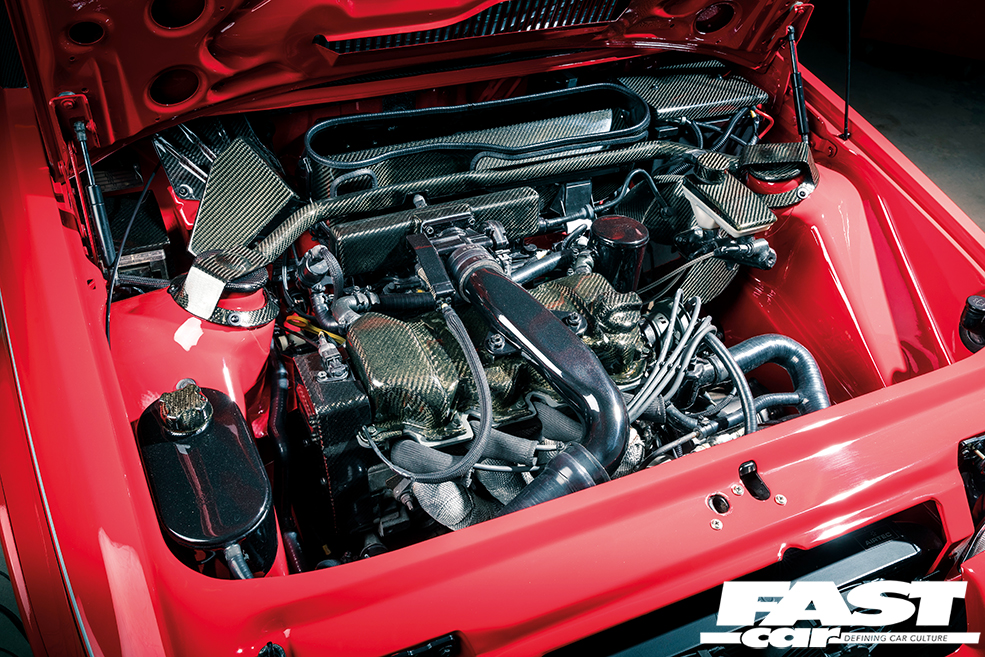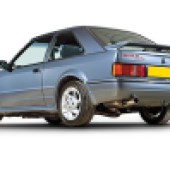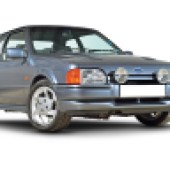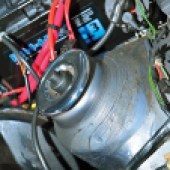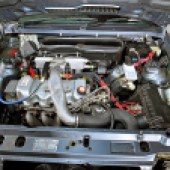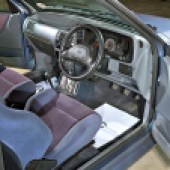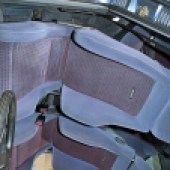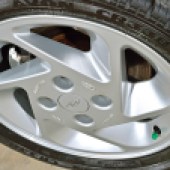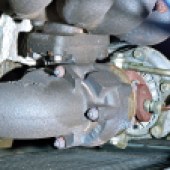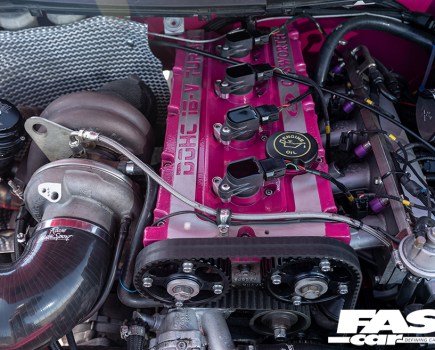Fast Ford icons don’t come much more affordable – and attainable – than the Escort RS Turbo S2, the big-boosting 1980s’ road racer that’s now becoming a classic. Buy one now before prices rocket…
Guide from Fast Ford magazine. Words: Dan Williamson. Photos: Fast Ford archives.
Ford Escort RS Turbo S2 history
February 1986 – Escort Mk4 range launched, including XR3i with fuel-injected 104bhp 1.6-litre CVH powerplant plus uprated suspension, 6x14in steel wheels, spoilers and sports seats with Daytona cloth. Optional dogleg 6x14in alloy wheels. Colours available: Diamond White, Rosso Red, Black or Nimbus Grey.
15 July 1986 – Escort RS Turbo Series Two becomes available, featuring revised version of Series One’s 1.6-litre CVH (130bhp) and gearbox. Closely based on the XR3i, the RS Turbo adds 6x15in alloy wheels, driving lamps, bonnet vents, wheelarch extensions, side skirts, colour-coded rear spoiler and window surrounds. Optional Custom Pack includes electric front windows, central locking and tilting/sliding glass sunroof.
January 1987– Recaro front seats in Daytona cloth become part of Custom Pack.
April 1987 – Knock sensor added to engine.
July 1987 – Custom Pack becomes standard on all RS Turbos. Radiant Red replaces Rosso and Mercury Grey replaces Nimbus.
September 1988 – Heated windscreen, revised decals, Zolda upholstery and grey headlining are added to the specification.
September 1989 – Facelifted RS Turbo (now referred to as ’90-spec) arrives with deeper front bumper, wrapped-over rear spoiler, extended centre console, rear-seat courtesy light and variable-speed intermittent wipers.
October 1990 – Escort Mk4 discontinued, after UK RS Turbo sales of 22,108. Escort Mk5 launched with no RS Turbo replacement.
Why you want a Ford Escort RS Turbo S2
- RS Turbos are a cornerstone of the fast Ford scene – as iconic today as in their 1980s’ heyday. It’s a badge that garners great respect from proper petrolheads throughout the land.
- Sinking your cash into any RS is a sensible investment, but in the Series Two’s case, its time to hit record prices is yet to come.
- Tuning an RS Turbo can bring big power and massive grins. It won’t help the value, but fighting for grip and laughing at lag is an unmissable experience.
Why you don’t want one
- Under that RS badge, it’s just a humble Mk4 Escort, and it’s far from sophisticated. There’s no power steering, the interior loves to rattle, and 130bhp won’t set the tarmac alight.
- Rust will turn an RS Turbo to dust. Repair panels are available, but a Mk4 can and will rot anywhere, and it’s vital to check for corrosion before buying.
- Beware of so-called standard/original RS Turbos having a history of being wildly modified many years ago – or, worse still, being nicked, crashed and badly repaired. The RS was a joyrider’s dream.
Ford Escort RS Turbo S2 key points
Identity – Fakes, ringers and reshells are common. Check the VIN matches the log book and both plates on the slam panel. Inspect the shell for factory ECU bracket drillings, ensure there’s ABS and a rear ARB.
Originality – Sympathetic mods are acceptable but originality is worth more. Factory panels, paint and no signs of welding (or rust) make an RS more valuable. But you’ll have less fun.
Interior – Check for tatty cloth, sagging door cards and wet carpets. Bear in mind the so-called ’90-spec had a larger centre console, but Zolda cloth and grey headlining arrived in autumn 1988.
Body – Anything that’s metal will rot, and corrosion can kill any Mk4. Check for rust in the floors, rear chassis rails, bulkhead, sills, sunroof, wheelarches and inner wings.
Engine – Rattly and coarse, of course, but beware of a CVH making nasty knocking noises or emitting blue smoke. Standard fuel injection is problematic, so be wary of misfires or poor performance.
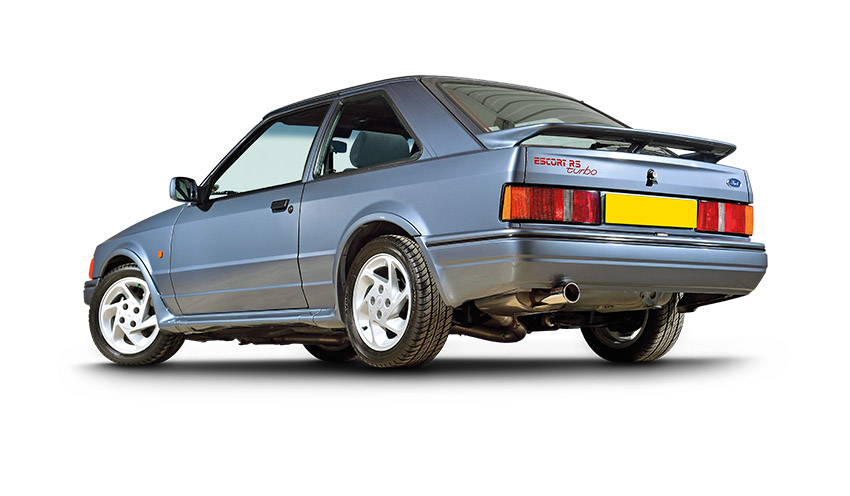
What to look for when buying a Ford Escort RS Turbo S2
Identity
Only a genuine Ford Escort RS Turbo S2 is worth big money. Ringers must be avoided, while replicas, reshells and outright fakes have to be cheap to justify buying. We’ve seen dodgy RS Turbos sold even recently through reputable sources, so do your homework and double-check everything.
Begin with the chassis number on the VIN plate (riveted to the slam panel), which must correspond with the details on the logbook, the digits stamped into the driver’s-side inner sill (beneath a flap in the carpet) and the build plate (riveted to the slam panel but painted body-colour). An RS Turbo’s VIN should read WF0BXXGCAB, followed by numbers that match the engine code (also found on the cylinder block).
Crucially, ensure you’re looking at a proper RS Turbo bodyshell. All RS Turbos built from July 1987 had a factory-fitted sliding/titling glass sunroof (look for a date sticker on the sunroof slider, which should tally with the car’s alleged age), electric front windows and central locking. From March 1988 all had electric door mirrors, and from September 1988 added a heated windscreen and pale grey headlining.
Genuine RS Turbo bodyshells had factory-made drillings for the ECU bracket to bolt to the bulkhead, triple-skinned steel in the engine bay (check where the metering unit attaches to the inner wing), and ABS (ensure all the parts are there, including pump, dashboard warning lamp and compensators on the rear suspension). The RS Turbo was the only Escort Mk4 to have a factory-fitted rear anti-roll bar (from an Orion), so ensure it has the drop link mountings on the rear wishbones.
Faking an RS Turbo from an XR3i was very common many years ago (less so now, when values are quite similar), but remember XR3is had rubbing strips along each side, plus black paint around the windows.
If you’re looking at a ’90-spec machine, the kit included different front bumper and rear spoiler, variable-speed intermittent wipers, and rear courtesy light. Its inner wings also had revised coolant/washer/brake fluid reservoirs, and when retrofitted to an earlier shell, the later header tank sits awkwardly in the engine bay.
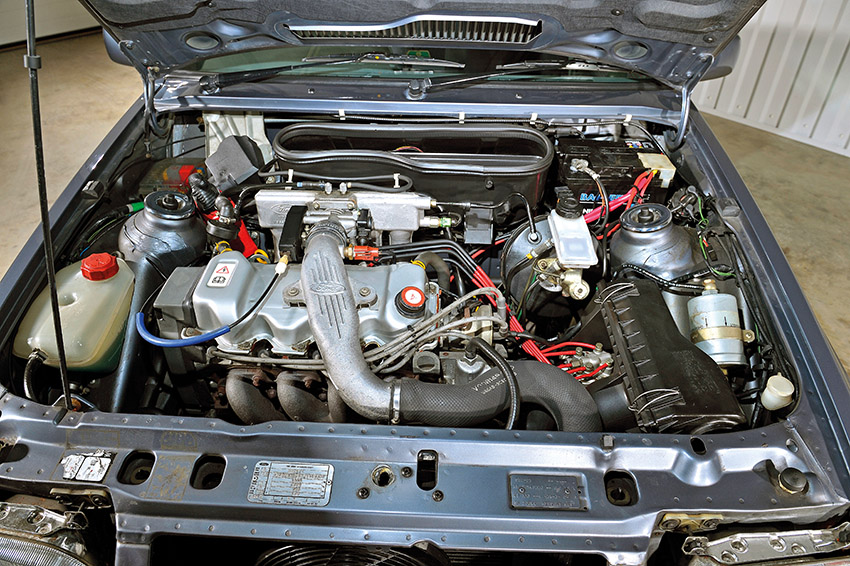
Engine & Transmission
Ford Escort RS Turbos S2 are capable of kicking out big bhp, but only if they’re healthy. And many are far from healthy or producing the claimed power.
Poor servicing plays havoc. The cambelt needs replacing every 36,000 miles (20k for a hard-used machine), and oil changes at 3000-to-6000 miles. It sounds excessive but mucky oil clogs up the hydraulic tappets and causes camshaft wear. Rattling from the top end is normal, but clattering is a problem, especially if accompanied by oil spitting out of the filler cap – possibly a blocked breather but maybe oil blowing past the piston rings; a rebuild will be required.
Heavy knocking from the bottom end is equally catastrophic, resulting from collapsed crankshaft bearings. Look for blue smoke from the exhaust under load, pointing to knackered pistons/rings or blown turbo; check for play by removing the inlet hose and wiggling the shaft. A whiff of blue smoke at start-up/on the overrun is common for a CVH due to worn valve stem oil seals (cheap and easy to repair).
White smoke from the exhaust suggests head gasket failure or a cracked cylinder head, so check for water in the oil (or vice-versa) or the engine running hot. Look out for fresh antifreeze – sign of good maintenance or covering up for head gasket faults.
Rough running is typical of a neglected RS Turbo. The original KE-Jetronic mechanical fuel injection (MFi) gives grief, primarily due to the metering unit, which can be tricky to fix and expensive to replace. Typically it causes misfires, sluggish performance and poor starting, although cutting out when warm is likely to be a dirty crank sensor, while the fuel pump relay (originally pink but aftermarket versions are black) often stops the car from starting.
Bad wiring is a common problem, thanks to chafing, corrosion or chopping-up to fit alarms and stereo systems. Poor running, inoperable cooling fans, underfuelling and even fire are real risks. Replacement looms aren’t cheap but may solve innumerable issues.
Air leaks often lead to poor performance, while collapsed hoses, a tired turbo and/or actuator tend to cause under-boosting; the car will feel particularly slow.
Oil leaks aren’t unusual, especially light splatters around the inner wings – generally from the cam cover gasket.
Modified cars are becoming less valuable than standard, but a better proposition if you want to enjoy the car, so don’t discard sensible upgrades such as EFi (electronic fuel injection) and a stainless exhaust. Bear in mind an OE system is ultra-rare.
Series Two RS Turbos were tamed by Ford SVE (Special Vehicle Engineering) for better road manners than the Series One, so the viscous-coupling limited-slip differential (LSD) was smoother, and the stock 3.82:1 final drive ratio was less frantic than the original’s 4.29:1.
But don’t be surprised to find a car with non-standard internals – it was common to replace a knackered RS Turbo gearbox with a non-LSD version from a regular Escort or XR3i.
Beware of rumbling from the transmission, especially in fifth gear, which points to wear on the input shaft. Whining suggests bearing/output shaft failure, while growing will probably be due to worn driveshafts; left to their own devices, they’ll destroy the gearbox. Don’t worry about clicking on full steering lock, which comes from tired CV joints – cheap and easy to fix.
The standard BC five-speed ‘box always had a rubbery gearchange, but excessive sloppiness suggests a worn linkage. A broken clutch adjusting ratchet can make it tricky to select gears (especially when accompanied by a clicking from the pedal), but crunching between gears (especially on second and third) points to synchromesh failure and the need for a rebuild.
Equally problematic is jumping out of gear (symptom of a broken selector) or a speedometer that’s working erratically (due to knackered diff bearings or internal gear failure). Again, it will need a rebuild.
The Series Two’s clutch and flywheel were bigger than its predecessor’s, yet they weren’t vastly better. Clutch slip is inevitable with any power increase, so check for slip under load – boot the throttle in fourth gear and ensure road speed increases as the revs rise. A worn clutch could also have an excessively low biting point or make it difficult to change gear.
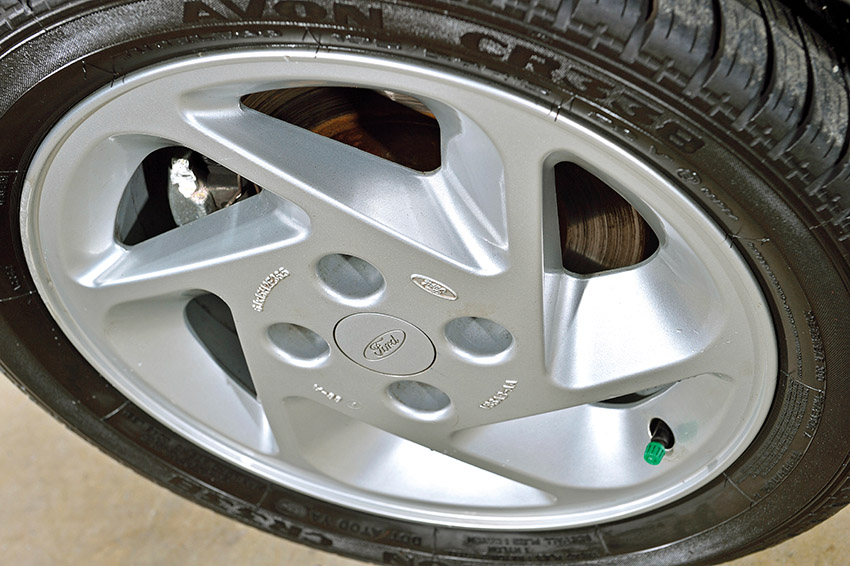
Suspension & Brakes
RS Turbos don’t handle like modern STs, so prepare to be underwhelmed – especially if you’re testing a tired example. Original equipment included XR3i suspension plus an Orion rear anti-roll bar; there will be no PAS but loads of torque-steer plus plenty of understeer. It’s frantic fun.
Soggy handling is often the result of worn suspension bushes: at the front in the track control arms, or at the back in the wishbones and tie bars; if they’re the factory rubber bushes they’ll probably be perished. Polyurethane replacements are the answer.
Wallowing may also come from tired springs and/or dampers, or – worse still – a severely rotten bodyshell around the suspension mounting points. Many RS Turbos have been fitted with lowering springs, which generally improve the handling but give an overly harsh ride unless accompanied by good-quality shock absorbers. Coilovers are often too hard for road use.
Broken or loose suspension components or worn bushes may also cause knocking and vibrations, but a failed steering column bush could also be to blame, especially if the front end feels vague. Rumbling noises are most likely due to worn wheel bearings or even poor tyres.
Juddering could also be coming from the front brakes – typically from worn/contaminated discs or pads but sometimes seized callipers. Replacement discs are easy to source, being 260mm parts from the Sierra XR4i.
Drums were fitted to the rear, and are prone to leaking from the wheel cylinders or seizing on the handbrake mechanism; they’re easy to check by jacking up the back of the car and spinning the wheels.
The standard-fit ABS system isn’t so easy to deal with. It’s a primitive belt-driven setup, which tends to break due to snapped belts or pump failure. Decent servos and master cylinders are difficult to find. Make sure the ABS dashboard light comes on with the ignition and goes off again after a few seconds; if it stays on, there’s a problem; if it doesn’t come on at all, someone’s removed the bulb.
Some owners delete the ABS system on the cheap by bunging up holes and removing belts. This disables the dual-circuit diagonal split, which is illegal and unsafe; the only way to do it properly is to replace the entire setup with parts from a non-ABS Escort Mk3/4.
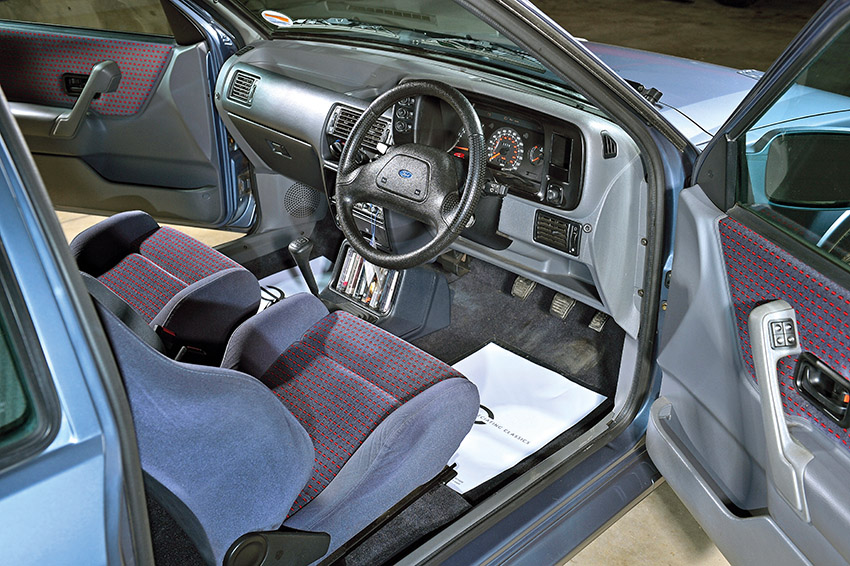
Interior
Ford Escort RS Turbo S2 trim was nothing special. Early Series Twos (before 1987) had an identical cabin to the contemporary XR3i, with Daytona cloth and a black headlining. Recaros were initially an optional extra, but it’s unlikely you’ll find any RS Turbo without them these days.
Recaros tend to wear out on the driver’s side bolster, and it’s common to find a passenger seat fitted instead. The cloth sags, the bases collapse, and recliner mechanisms become loose – all signs of high mileage. Check the fabric for tears, burns, and loose stitching.
RS Turbos built from September 1988 were fitted with Zolda/Shadow upholstery and pale grey headlining, which is often described as ’90-spec. In fact, ’90-spec cars (from September 1989) kept the Zolda cloth but also included an extended centre console, variable-speed intermittent wipers and rear courtesy light.
Unless you’re buying a low-mileage minter, expect the cabin to be crude and rattly. Many parts are shared with lesser Mk4 Escorts, so they’re not tricky to source, but beware of crinkly door cars and scuffed grab handles, because concours examples are extremely rare. Replacement parcel shelves are equally sought after, so make sure it’s not sagging or cut for speakers.
Check the carpets aren’t worn out – a sign of high mileage – or wet, which suggests water leaking in through the sunroof, battery tray or heater matrix.
Ensure all the switches and gadgets work correctly: electric window and central locking motors get sticky, while the indicator stalks can be fragile. Stick your head under the dashboard at the driver’s side and inspect the fuse box for burnt-out relays and chopped-up wiring from a previous owner‘s stereos, gauges or neons.

Exterior
Corrosion is the long-term enemy of the Ford Escort, and the RS Turbo S2 is no exception. Even now, a rotten RS Turbo body can be too far gone to repair – thus the number of reshelled cars on the roads.
Check everywhere for corrosion. On top, the sunroof mechanism could be rusty, surrounded by a bubbling roof skin. Sunroof drains exit into the front sills, and rot them out when blocked. Look for rot behind the side skirts and wheelarches, followed by the front wings, bumper mounts/radiator support panel, bonnet, scuttle panel (especially at the corners of the windscreen surround), A-pillars, doors, tailgate, rear valance and around the fuel filler.
Inspect the engine bay, noting the front crossmember, inner wings, bulkhead, battery tray and fuse box area. If you’re paying for a mint, unrestored car, make sure the seam sealer along the front wings and rear quarter has a factory-applied finish.
Inside the car, lift the carpets to check the footwells, look under the back seat, check inside the rear quarters (if you’re allowed to remove the trim panels) and boot floor; beware of cracks and corrosion around the rear suspension turrets and back bumper mounts.
Underneath, pay attention to the entire floorpan and, in particular, the rear chassis rails, which can rot away completely. Beware of creases that indicate accident damage – loads of RS Turbos were crashed when new.
Reproduction body panels are available, as are door/window seals. NOS parts are still out there, but pay heavily for the privilege.
Check the headlamps are proper Carello and not corroded, and ensure the authentic Carello 640 driving lamps are in place – replacements are very pricey, and even the brackets cost a packet.
Don’t be surprised to see brake lights flashing with indicators – Mk4s were always prone to bad earths and dodgy connections, but beware of a wiring loom that’s been heavily hacked around.
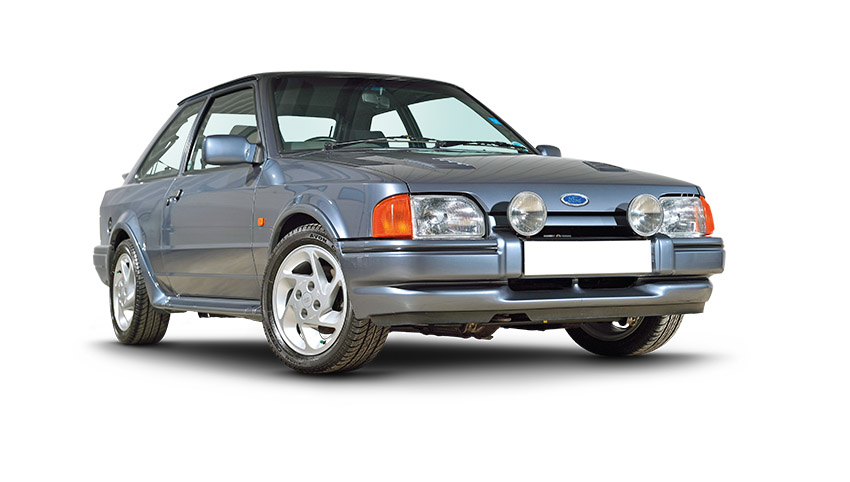
Ford Escort RS Turbo S2 prices
Project: £2000 to £5000 – Only bare shells with logbooks are £1000, but twice that much buys a pile of rust with all the right parts. It’s possible to find a runner within budget, but don’t bank on it being a pukka RS.
Good: £5000 to £15,000 – Snap up the best-condition car you can afford, because this price bracket is typically reflective of nice, usable RS Turbos that will need a chunk of cash spending to make absolutely mint.
Concours: £15,000 to £30,000-plus – Two things to look for: low mileage and factory paintwork. Most RS Turbos at this level are show-standard and stock. We’d expect to see a genuine sub-10,000-mile RS reach £50k-plus.
Tech Spec: Ford Escort RS Turbo S2
Engine:
1596cc in-line four-cylinder, eight-valve, SOHC CVH with cast-iron block and alloy head, 8.2:1 compression ratio, Bosch KE-Jetronic fuel injection, Bosch-Motorola engine management, Garrett T3 turbocharger, intercooler
Transmission:
Front-wheel drive with B5 five-speed manual gearbox, 3.82:1 final drive ratio, viscous-coupling limited-slip differential, 218mm single-plate clutch
Suspension:
Front: MacPherson struts, Fichtel & Sachs gas-filled dampers, revised coil springs, 24mm anti-roll bar; rear: transverse trailing arms, Fichtel & Sachs gas-filled telescopic dampers, revised coil springs and 16mm anti-roll bar
Brakes:
Front: 260mm ventilated discs; rear: 229mm drums; Lucas-Girling mechanical anti-lock braking system
Wheels & Tyres:
6x15in six-spoke alloys and Dunlop or Goodyear 195/50VR15 tyres
Exterior:
Escort three-door hatchback body with colour-coded Ford RS bodykit comprising deep front bumper, bonnet vents, wheelarch extensions, side skirts, rear bumper and XR3i tailgate spoiler, red bumper inserts (black on red cars), colour-coded door mirrors, front driving lamps, tinted glass. Custom Pack (optional until July 1987; standard thereafter) added tilting/sliding glass sunroof, electric front windows and central locking. Options included electric/heated door mirrors (standard from March 1988), heated windscreen (standard from September 1988). Colours: Diamond White, Rosso Red, Black, Nimbus Grey, Mercury Grey, Radiant Red
Interior:
XR3i-type or optional Recaro front seats (standard from 1987) in grey Daytona trim (Zolda/Shadow from September 1988) with matching rear bench and door cards, soft-feel two-spoke steering wheel, black headlining (pale grey from September 1988). Options included trip computer and stereo upgrades

